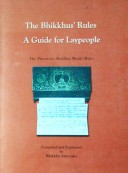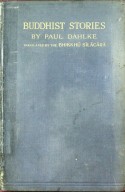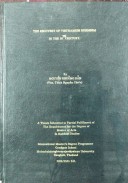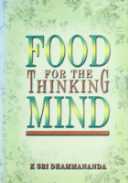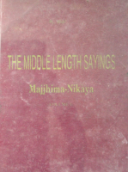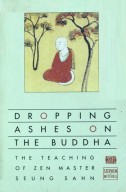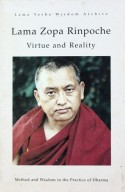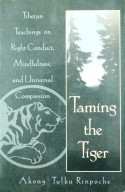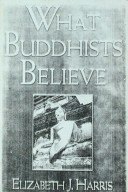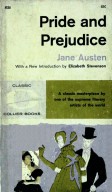Tìm Sách
Sách tiếng Anh-English >> Buddha Desana and Essential Principles for Englightenment
Thông tin tra cứu
- Tên sách : Buddha Desana and Essential Principles for Englightenment
- Tác giả : Bhaddanta PannaDipa
- Dịch giả :
- Ngôn ngữ : Anh
- Số trang : 87
- Nhà xuất bản : U Aung Gyi Shwe Parabaik Sarpay-Myanmar
- Năm xuất bản : 1998
- Phân loại : Sách tiếng Anh-English
- MCB : 12100000011551
- OPAC :
- Tóm tắt :
Part I. THE BUDDHA DESANA
- THE TEACHING OF THE BUDDHA
One of the great religions commonly known to various part of the world as Buddhism is the Teaching of the Buddha. In general, the real essence of Buddhism is not properly understood by many people of the world especially in the west. The term “Buddhism” is generally used all over the world as a religion which is believed by the Buddhist people. Some scholars who have earnestly done research in comparative study of religions understand Buddhism correctly in its proper sense. However, many are, as a matter of course, liable to be mistaken with other isms as the word “Buddhism“ itself is exposed with its suffix “ism”.
The teaching of the Buddha in terms of Buddha- desana was discovered by Gotama the Buddha who was fully enlightened and awakened in the Four Noble Truths (ariya sacca) in India over 2,500 years ago. Gotama is the name of a clan; and the term Buddha is a Pali word which literally means the Enlightened One. This particular name was given to the holy man who had perfectly realized the Noble Truths and became an All-knower or Omniscience (sabbannu).
Before he became the Buddha, he was born as a prince of King Suddhodana and Queen Mahamaya. But he was extraordinary human being who had fulfilled the perfections for aeons of time in long long past lives searching for the Noble Dhamma and aiming at the cessation of sufferings for himself and for all sentient beings as well. That is, Buddha intended if He could attain Nibbana He would help other beings so that they also could attain it like Himself. He, having practised through strenuous effort and by human means, found out the very state of utter liberation in Nibbana and revealed it to others with His enlightened wisdom. That is, He taught to all mankind His Dhamma – the only straight path of enlightenment that lead thereto. And as such, the main objective or the final goal of His Teaching is for the attainment of Nibbana – the ultimate liberation from all the endless sufferings in samsara (the cycle of birth and death). Here, in order to attain the state of happiness of Nibbana we have only to follow devotedly the footpath of the Buddha or the principles of the Dhamma laid down by the Buddha.
CONTENT
VOLUME 1. BUDDHA DESANÄ
Part I. THE BUDDHA DESANÄ
- The Teaching of the Buddha
- Not an ism
- Not a religion
- Not a philosophy
- The distinguished characteristics of Buddhism
- A psycho-ethical philosophy
- Relevant principles of Man
- Outstanding facts in Buddhism
Part II. THE BUDDHA
- The Perfectly Enlightened One
- Life of the Buddha
- Supreme Qualities of the Buddha
Part III. THE DHAMMA
- His teaching
- Noble Attributes of the Dhamma
- Some salient points
Part IV. THE SANGHA
- His Noble disciples
- The founder
- Two devoted lay disciples
- The origin of the Sangha
- Yasa, the second convert into the order
- Yasa’s friends
- The Holy Order of the Sangha
- The advantages of being a Sangha
- Noble Attributes of the Sangha
VOLUME 2. THE ESSENTIAL PRINCIPLES FOR ENLIGHTENMENT
Part I. KAMMA AND REBIRTH
- Kamma and its result
- Short life and long life
- Sickness and health
- Ugliness and beauty
- Few friends and many friends
- Poverty and wealth
- Low-born and high-born
- Ignorance and intelligence
Part II. THE DEPENDENT ORIGINATION
- An effect depends on a cause
- The links between cause and effect
- Two root defilements
- Three rounds in the process of existence
- Links in natural order
- Links in reverse order
- Grasping on the aggregates
8. A being – merely mind and matter
9. Cutting of the wheel of lives
Part III. THE DOCTRINE OF ANATTA
- The origin of religion
- Basic knowledge of the Noble Truths
- Four great religions
- The fundamentals of The Buddha-Dhamma
- The views of other three religions
- Atta versus Anatta (Soul and no-soul)
- Natural law and The Buddha-Dhamma
- No-soul view and human being
- Arising and passing away of mind and body
- Nothing reality in the phenomenal existence
- No-self, no-ego
- Anatta, the ultimate reality
- Origin of life
- Three tenses of life-process
- The practice of one’s sake
- The noble advice of the Buddha
 Facebook
Facebook
 Google
Google
 Google+
Google+

